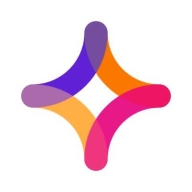

Jitterbit Harmony and dbt compete in the data integration and transformation category. Jitterbit Harmony has the upper hand in integration and API management, while dbt is preferred for data transformation capabilities, suggesting it as the better solution for data modeling priorities.
Features: Jitterbit Harmony's strong integration connects applications and systems easily, supported by intuitive API management. It simplifies connectivity across multiple platforms. dbt specializes in transforming raw data into analytics-ready datasets with robust SQL-based modeling, offering unmatched transformation features that enhance clarity and accuracy in datasets.
Ease of Deployment and Customer Service: Jitterbit Harmony offers cloud-based deployment with broad support, improving integration processes with minimal effort. Its customer service is prompt, ensuring smooth implementation. dbt empowers technical teams using clear documentation and community-based support, facilitating self-guided deployment. It promotes self-service with community resources aiding troubleshooting.
Pricing and ROI: Jitterbit Harmony generally incurs a higher upfront cost due to its comprehensive feature set but provides substantial ROI through faster integration and scalability. dbt, with an open-source foundation, is cost-effective, particularly for startups, offering a strong ROI through enhanced data modeling. Jitterbit's higher costs are offset by long-term financial benefits, while dbt provides value through cost efficiency and improved data handling.
| Product | Market Share (%) |
|---|---|
| dbt | 2.1% |
| Jitterbit Harmony | 0.6% |
| Other | 97.3% |


| Company Size | Count |
|---|---|
| Small Business | 8 |
| Midsize Enterprise | 3 |
| Large Enterprise | 1 |
dbt is a transformational tool that empowers data teams to quickly build trusted data models, providing a shared language for analysts and engineering teams. Its flexibility and robust feature set make it a popular choice for modern data teams seeking efficiency.
Designed to integrate seamlessly with the data warehouse, dbt enables analytics engineers to transform raw data into reliable datasets for analysis. Its SQL-centric approach reduces the learning curve for users familiar with it, allowing powerful transformations and data modeling without needing a custom backend. While widely beneficial, dbt could improve in areas like version management and support for complex transformations out of the box.
What are the most valuable features of dbt?In the finance industry, dbt helps in cleansing and preparing transactional data for analysis, leading to more accurate financial reporting. In e-commerce, it empowers teams to rapidly integrate and analyze customer behavior data, optimizing marketing strategies and improving user experience.
Jitterbit Harmony offers an advanced integration platform that simplifies data transformation, helps users quickly connect apps, and automates workflows, streamlining complex business processes efficiently.
Designed to meet the high demands of modern businesses, Jitterbit Harmony enables seamless integration across cloud and on-premise environments. By leveraging its powerful tools and user-friendly design, users can accelerate innovation, reduce operational costs, and enhance productivity. It bridges the gap between traditional and emerging technologies, ensuring organizations can adapt quickly to market changes and remain competitive.
What are the key features of Jitterbit Harmony?Jitterbit Harmony finds its application across numerous industries, from enhancing data integration in the healthcare sector to optimizing supply chain logistics in manufacturing. It supports financial institutions by improving transaction processing and facilitates real-time data connectivity in retail environments, making it a versatile choice for diverse industries looking to innovate rapidly.
We monitor all Data Integration reviews to prevent fraudulent reviews and keep review quality high. We do not post reviews by company employees or direct competitors. We validate each review for authenticity via cross-reference with LinkedIn, and personal follow-up with the reviewer when necessary.